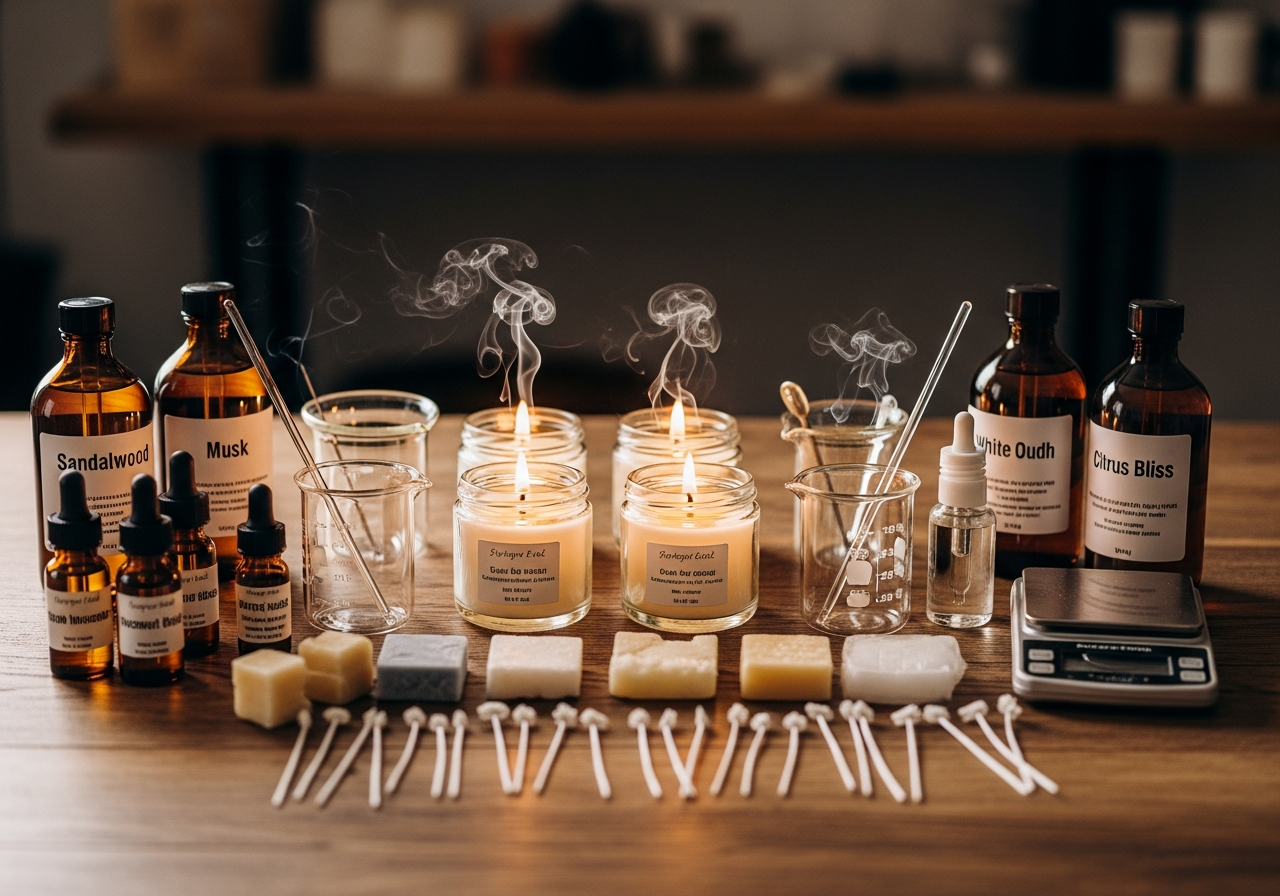
Ever lit a candle and felt like you have been transported to a spa-like sanctuary, or remembered a fond memory? Achieving that kind of emotional aroma doesn't happen by chance. It all comes down to choosing the best fragrance oils for candles.
In fact, some industry guides note that fragrance oils are engineered for "stronger and more consistent scent throw" in candles than essential oils. Whether you're asking, "What is the best fragrance oil for candles?" or seeking the "best brand of fragrance oils for candles", the right answer depends not only on brand but on how the fragrance oil performs in your wax, container, and environment.
Also, considering that the global candle market is valued at USD 14.06 billion in 2024 and will further increase to USD 20.10 billion by 2030. Hence, for formulators, it is necessary to choose the right fragrance oil to stay ahead in the competition.
Today, we are going to list some of the best fragrance oils for candles, explain how to evaluate fragrance oils, and outline the testing required.
Firstly, when it comes to candle making, several factors play an important role, beyond just a nice smell. Here is what candle makers consider:
Fragrance oils specifically formulated for candles are known to offer stronger cold and hot throws than generic fragrance oils or essential oils. Also, other oil options that are not designed for candles can separate, clog wicks, or even fade under heat. Hence, selecting the best fragrance oil brands for candles is of utmost importance.
To find the best fragrance oils for candle making, it is necessary to understand scent families and how they behave in candle form. Here are some categories, what they tend to evoke, and examples in that category:
Feels warm, earthy, and grounding. Woods like sandalwood, cedarwood, vetiver, and patchouli. These are ideal for luxury, masculine, or unisex candles.
Why they perform well: Woody base notes often give good longevity and can carry well through the burn.
How to Use:
These notes are known to feel more intimate, rich, and deep.
Why they perform well: Musk and animalic (or synthetic animalic) bases lend sophistication, sensuality, and lasting scent.
How to Use:
These fragrances feel warm, resinous, and a little sweet.
Why they perform well: They are known to offer relaxation and a sense of luxury.
How to Use:
They give out a very clean, bright, and refreshing feel.
How to Use:
Testing the best fragrance oil for candles is an important step before finalising it. It is not a creative step; it is actually a science. Every oil behaves differently based on wax type, temperature, and concentration. It is therefore necessary to perform performance testing to understand how a scent throws, how long it lasts, and whether it will remain stable.
Here's a step-by-step protocol to help you assess "what is the best fragrance oil for candles" in your setup.
Selecting the best brand of fragrance oil for candles is where art blends beautifully with chemistry. The correct scent not only defines the candle's personality, but it will also have the capability to influence burn quality and customer appeal.
Here is the guide that you can follow:
Consider:
When you are on the lookout for the best fragrance oil for candle making, it is about performance, correct composition, and a perfect balance. From understanding scent categories like woody, floral, or gourmand to testing hot and cold throws, every step defines the final experience your candle delivers. It is necessary to carefully evaluate and experiment to create candles that smell divine and look beautiful and consistent.
Top-performing categories include woody (sandalwood, cedarwood), floral (lavender, jasmine), citrus (lemon, bergamot), and gourmand (vanilla, caramel) oils, known for their strong scent throw and stability during burning.
Luxury candles often feature layered scent profiles with woody base notes, musky undertones, and delicate top notes such as bergamot, rose, or amber.
Hot throw refers to the scent released when the candle burns, while cold throw is the fragrance you smell when the candle is unlit.
Fragrance load determines how much oil your wax can hold without affecting burn quality. Using the correct load ensures optimal scent performance.